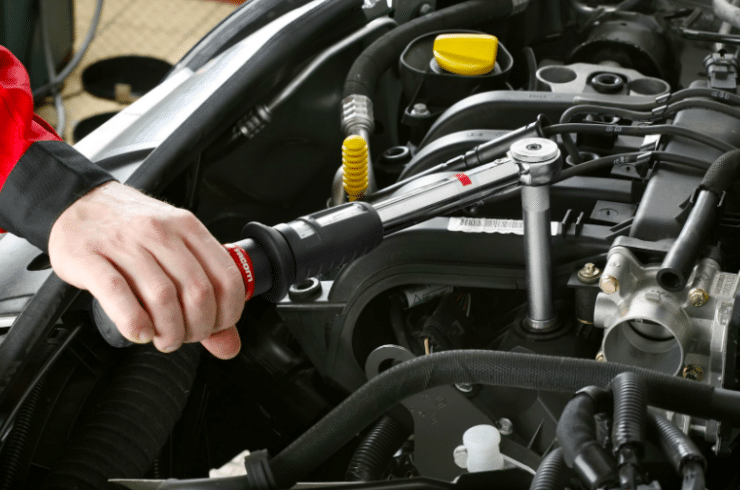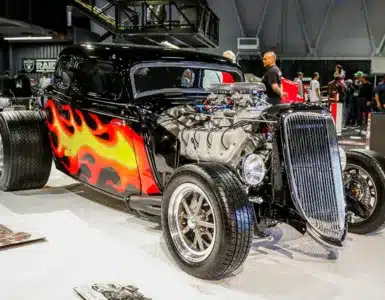Auto repair is a complex and challenging task that requires the right set of tools to ensure efficiency, accuracy, and safety. Whether you’re a professional mechanic or a DIY enthusiast, having the essential tools for auto repair is paramount to successfully diagnose and fix various vehicle issues. In this comprehensive guide, we will explore the must-have tools for auto repair, their functions, and how they contribute to maintaining and repairing vehicles effectively.
1. Socket Set
A socket set is one of the most fundamental tools for auto repair. It consists of a variety of sockets in different sizes and types, along with a ratcheting wrench or breaker bar. These sockets are designed to fit onto bolts and nuts of various sizes, allowing mechanics to loosen or tighten them with ease. Socket sets come in both metric and standard measurements to accommodate different vehicle makes and models. Whether you’re removing spark plugs, tightening engine bolts, or replacing brake calipers, a socket set is indispensable.
2. Wrench Set
Similar to socket sets, wrench sets are essential tools for auto repair. They come in different types, including open-end wrenches, combination wrenches, and adjustable wrenches. Each type serves a specific purpose, from loosening or tightening bolts and nuts to holding parts in place while working on them. Wrench sets are indispensable for tasks such as removing and installing fasteners, adjusting belts, and accessing tight spaces where sockets may not fit.
3. Screwdriver Set
A screwdriver set is another staple in any auto repair toolkit. It includes a variety of screwdrivers with different types of heads, such as flathead, Phillips, and Torx. These tools are crucial for removing or installing screws in various components of a vehicle, including interior panels, engine covers, and electronic modules. Additionally, screwdrivers with magnetic tips can be particularly useful for preventing screws from getting lost in hard-to-reach places.
4. Pliers Set
Pliers are versatile tools that come in handy for a wide range of auto repair tasks. They can be used to grip, twist, bend, and cut wires, hoses, and other materials. Pliers sets typically include different types such as needle-nose pliers, slip-joint pliers, and locking pliers, each serving a specific purpose. Whether you’re working on electrical connections, removing stubborn clips, or crimping hoses, having a reliable set of pliers is essential.
5. Jack and Jack Stands
When it comes to lifting vehicles for maintenance or repair, a jack and jack stands are indispensable tools. A hydraulic floor jack allows mechanics to raise vehicles off the ground safely, providing access to the underside for tasks such as oil changes, brake inspections, and suspension repairs. Jack stands are then used to support the vehicle at the desired height, ensuring stability and preventing accidents while working underneath.
6. Diagnostic Scanner
In today’s modern vehicles, onboard computers and electronic systems play a significant role in monitoring and controlling various functions. A diagnostic scanner is a crucial tool for identifying and troubleshooting issues with these systems. It connects to the vehicle’s onboard diagnostic (OBD) port and retrieves error codes, sensor data, and other valuable information. With a diagnostic scanner, mechanics can pinpoint problems more accurately, saving time and effort in diagnosing complex issues.
7. Multimeter
Electrical problems are common in vehicles and often require precise diagnosis to resolve. A multimeter is an essential tool for testing electrical circuits, measuring voltage, current, and resistance. With a multimeter, mechanics can identify faulty components, check wiring integrity, and troubleshoot charging or starting system issues. Whether you’re diagnosing a malfunctioning alternator, testing a faulty sensor, or tracing a short circuit, a multimeter is indispensable for accurate electrical diagnostics.
8. Brake Bleeder Kit
Maintaining proper brake function is critical for vehicle safety, and bleeding the brake system is a routine maintenance task that ensures optimal performance. A brake bleeder kit simplifies this process by allowing mechanics to remove air bubbles and old brake fluid from the system quickly. It typically includes a hand pump or pneumatic tool, along with hoses and fittings for connecting to the brake calipers or wheel cylinders. Regular brake bleeding helps prevent spongy brakes, improves pedal feel, and extends the life of brake components.
9. Oil Filter Wrench
Changing the engine oil and oil filter is a routine maintenance task that requires the right tools for proper execution. An oil filter wrench is designed to grip and remove the oil filter housing securely, allowing mechanics to replace the filter efficiently. It comes in various sizes and types to accommodate different filter housings and makes changing the oil filter a hassle-free process. With an oil filter wrench, mechanics can ensure a tight seal and prevent leaks when installing a new oil filter.
10. Torque Wrench
Proper torque is crucial for ensuring the integrity and safety of critical fasteners in a vehicle. A torque wrench is a precision tool that allows mechanics to tighten bolts and nuts to the manufacturer’s specifications accurately. It typically features a calibrated scale or digital display to set the desired torque level, along with a ratcheting mechanism to prevent over-tightening. Whether you’re installing cylinder head bolts, wheel lug nuts, or suspension components, using a torque wrench helps prevent damage to parts and ensures consistent performance.
Having the right tools is essential for success in auto repair, whether you’re a professional mechanic or a DIY enthusiast. From socket sets and wrenches to diagnostic scanners and torque wrenches, each tool plays a vital role in maintaining and repairing vehicles effectively. By investing in high-quality automotive tools and equipment, mechanics can work more efficiently, diagnose problems accurately, and ensure the safety and reliability of the vehicles they service.




